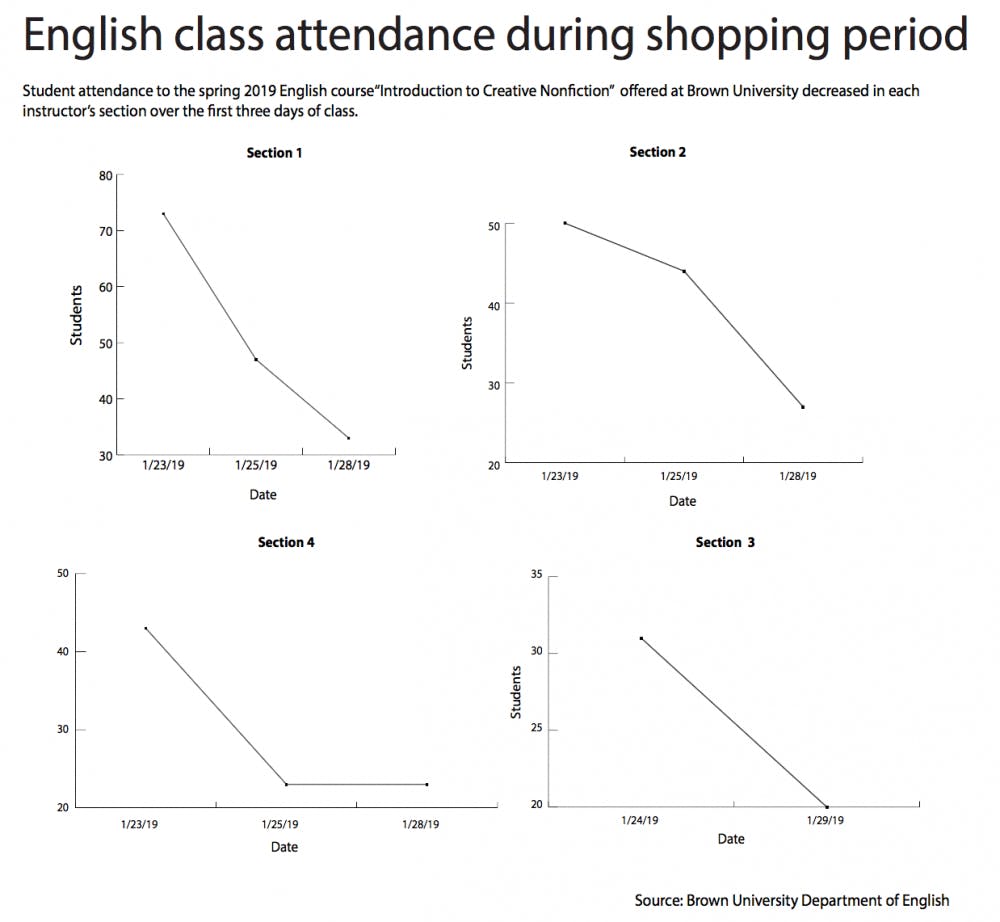During the first few days of shopping period, it’s not unusual to find students crammed into a small classroom, leaning against the walls and windows, sitting on the floor and even waiting in the hallway outside. In many cases, these students are shoppers trying to claim spots in an introductory writing course.
Students have struggled to enroll in English and Literary Arts Department courses, such as ENGL 0930: “Introduction to Creative Nonfiction” and LITR 0110A: “Fiction I.” These courses are typically capped at 17 spots, which tend to fill up during the pre-registration period.
But this does not deter students from shopping writing courses. According to Lawrence Stanley, co-director of the Nonfiction Writing Program in the English Department, it is typical to see 40 students attend each section of introductory nonfiction classes in the first few days. In some extreme cases, 70 or 80 students may shop a section, he said.
“The University needs to take seriously the fact that we don’t begin to meet the demand,” Stanley said. According to the four professors interviewed by The Herald, both departments are unable to offer more courses due to budget limitations.
But Senior Associate Dean of the Faculty Janet Blume said the budgets for the English and Literary Arts departments are “not insignificant.”
“We’re very aware of providing support to those departments and making sure the resources are used well,” she said. “We want to make sure people are getting access to … every course that they want to take. … It’s not always attainable, but that’s absolutely the goal.”
Blume referenced a recent gift made to the Literary Arts Department by David Bonderman and Laurie Michaels, which allowed for two new faculty hires. Additionally, the University is trying to give more of those in “visiting faculty ranks” full time jobs, Blume said.
A few years ago, the Literary Arts Department tried to address demand for their courses by doubling the number of classes offered. But “the bottom line is this: there is more demand than we can meet,” said John Cayley, chair of the Literary Arts Department.
The English Department is currently trying to address the influx of student interest by conducting a national search for a new director for the Nonfiction Writing Program, said Richard Rambuss, chair of the English Department. The current directors have held their positions since the beginning of the program. “(We are) bringing in someone from outside with a different set of experiences and different ideas to take a look at the program,” he said. “That person from their own experience would then start to review, re-evaluate, innovate, strengthen (and) modify” the program.
“What I hope is that the University might listen to this new person,” Stanley said. When interviewing candidates, “one of our questions will be — what do we do about this demand?”
The English Department has already tried to respond to the high demand for these small classes by capping the number of students in each writing seminar at 17, which is larger than the optimal class size, Stanley said. According to the National Council of Teachers of English, 15 students is the ideal amount to enable thorough feedback and effective individual help.
“We feel very strongly — and I don’t think any student will disagree with that — that writing courses should be really small,” Rambuss said. “We want them to be even closer, more intimate, more intensive” than lecture courses.
English and Literary Arts professors interviewed by The Herald emphasized the importance of keeping the number of students in a writing class low. “We want to be able to accommodate as many people as possible,” said Jonathan Readey, co-director of the Nonfiction Writing Program with Stanley. But “we still want students to be able to have a small class experience.”
If classes were larger, students would receive less feedback on their writing samples from professors, and the courses would be less close-knit, Readey said. Professors would also have less time to meet with students, he added.
Ultimately, Rambuss said complaints about the courses’ accessibility show a “passionate, sustained undergraduate interest in writing.”
“Students very quickly pick up that writing is part of the very ethos of this school,” Rambuss added.





